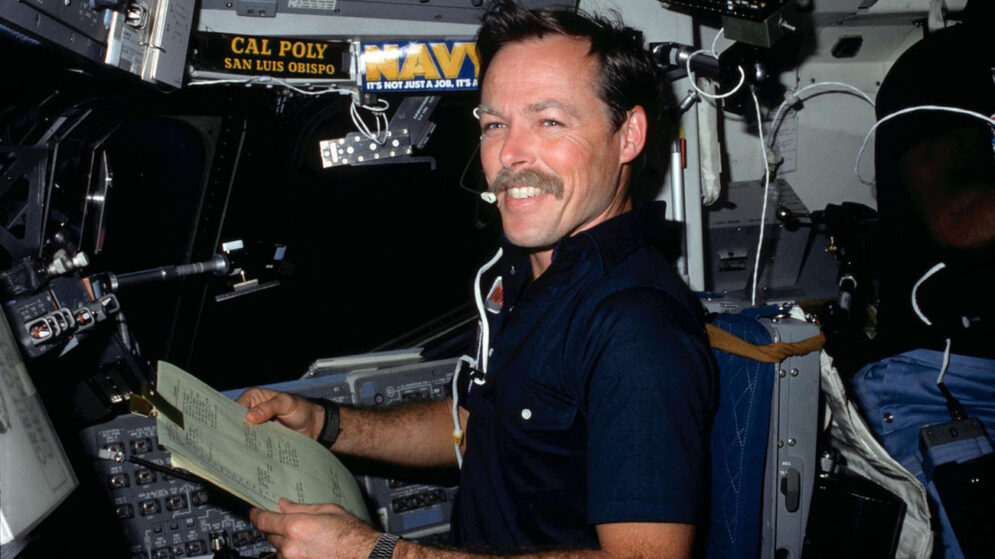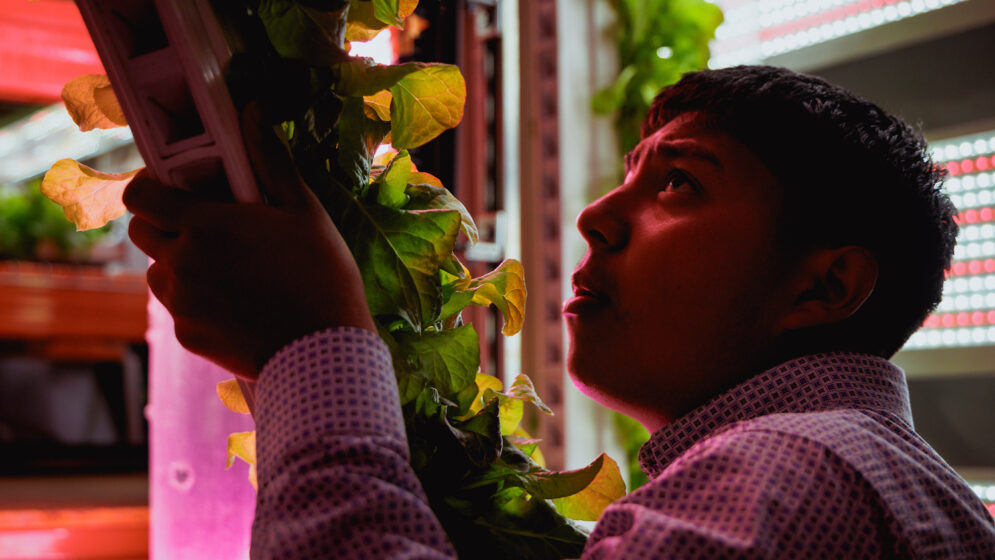Cal Poly's Astronauts
Victor Glover
As the engineering alumnus gets ready for a historic voyage beyond the moon, he shares how Learn by Doing prepared him to face the unknown.
By Larry Peña // Illustration by Kyleigh Pinto
Share this article:
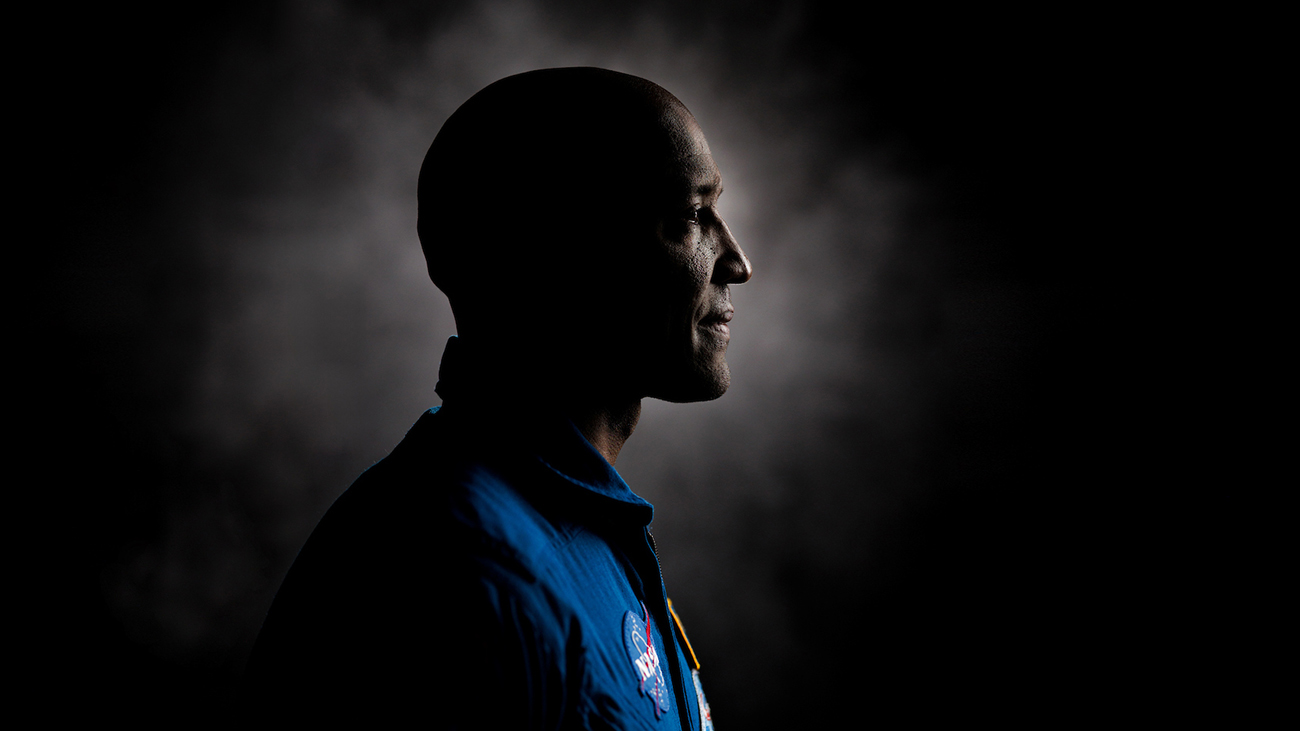
Cal Poly alumnus and astronaut Victor Glover poses for a portrait at Cal Poly. Photo by Joe Johnston and Dylan Head.
For the first time in more than half a century, America will send humans on a lunar mission — and one Mustang will cement a lasting legacy in the annals of space travel.
Victor Glover (General Engineering ʼ99) will pilot NASA’s new Orion spacecraft as part of the crew of the upcoming Artemis II mission, taking a wide orbital path around the moon that will potentially bring the crew farther from Earth than humans have ever been before.
“We still call amazing things that humans do moonshots, and now our generation is going to get to have one of our own,” says Glover.
Victor Glover’s Ask Me Anything interview with Cal Poly students, faculty and leaders. Watch it on YouTube.
VICTOR GLOVER
AT A GLANCE
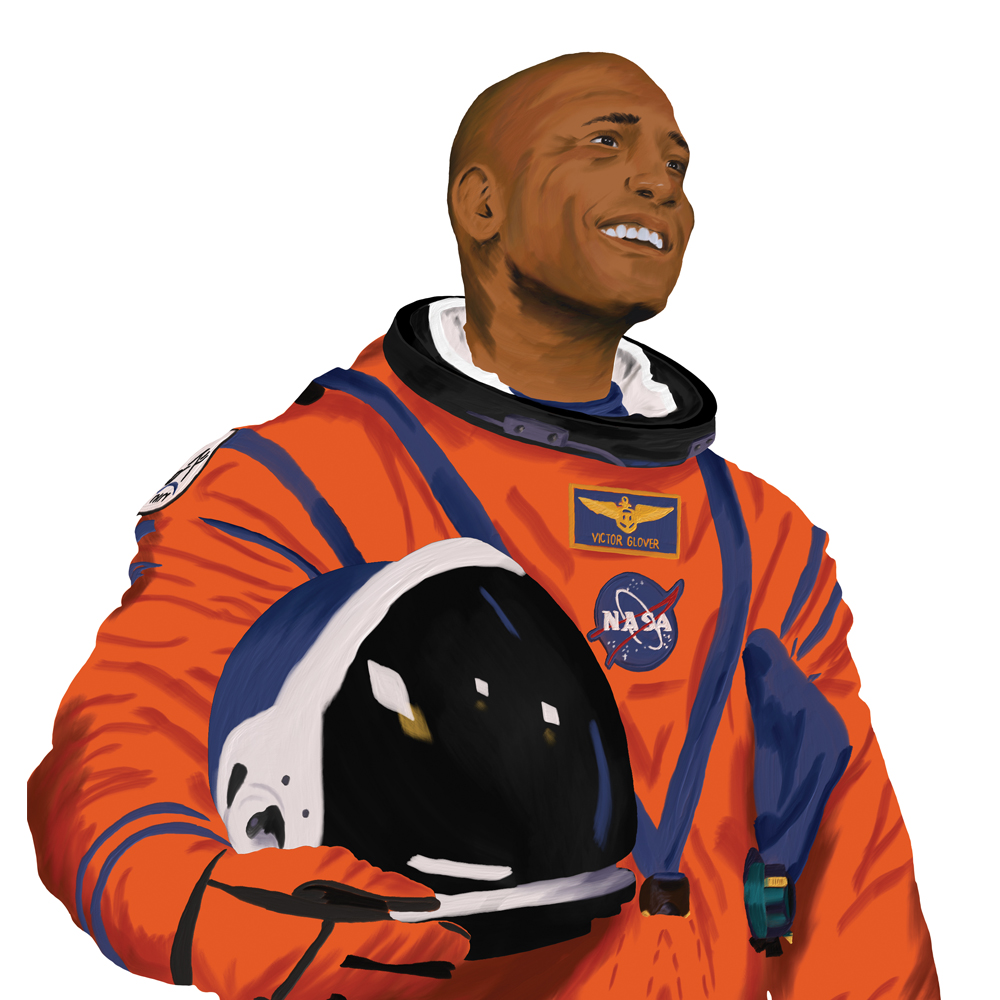
CAL POLY MAJOR
General Engineering, 1999
NAVY CAPTAIN AND FORMER FIGHTER PILOT
1 SPACE MISSION WITH NASA
Piloted the first operational flight of the SpaceX Crew Dragon
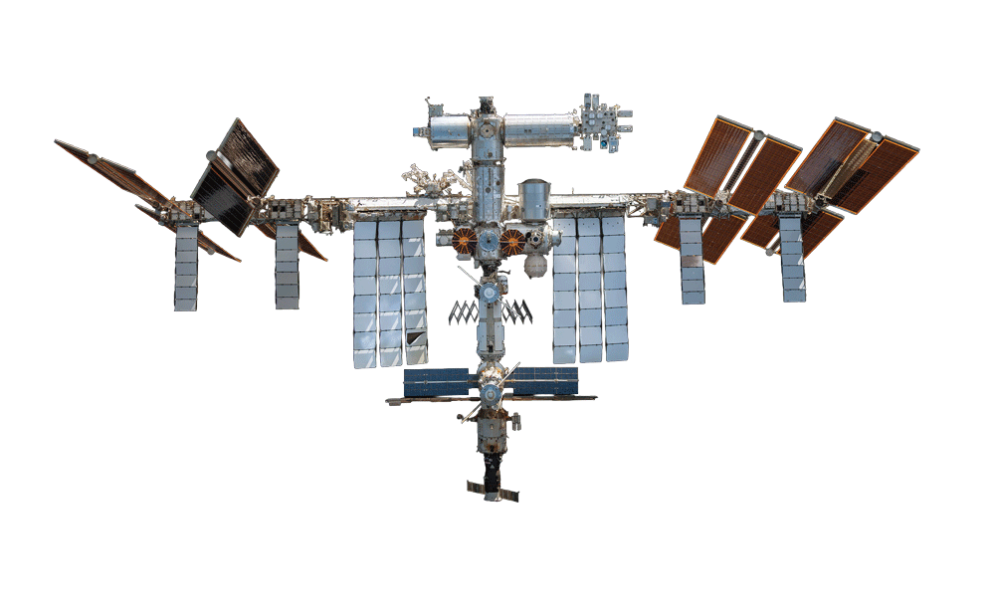
6-MONTH STAY
on the International Space Station
TOTAL TIME IN SPACE
167 DAYS
6 HOURS 29 MINUTES
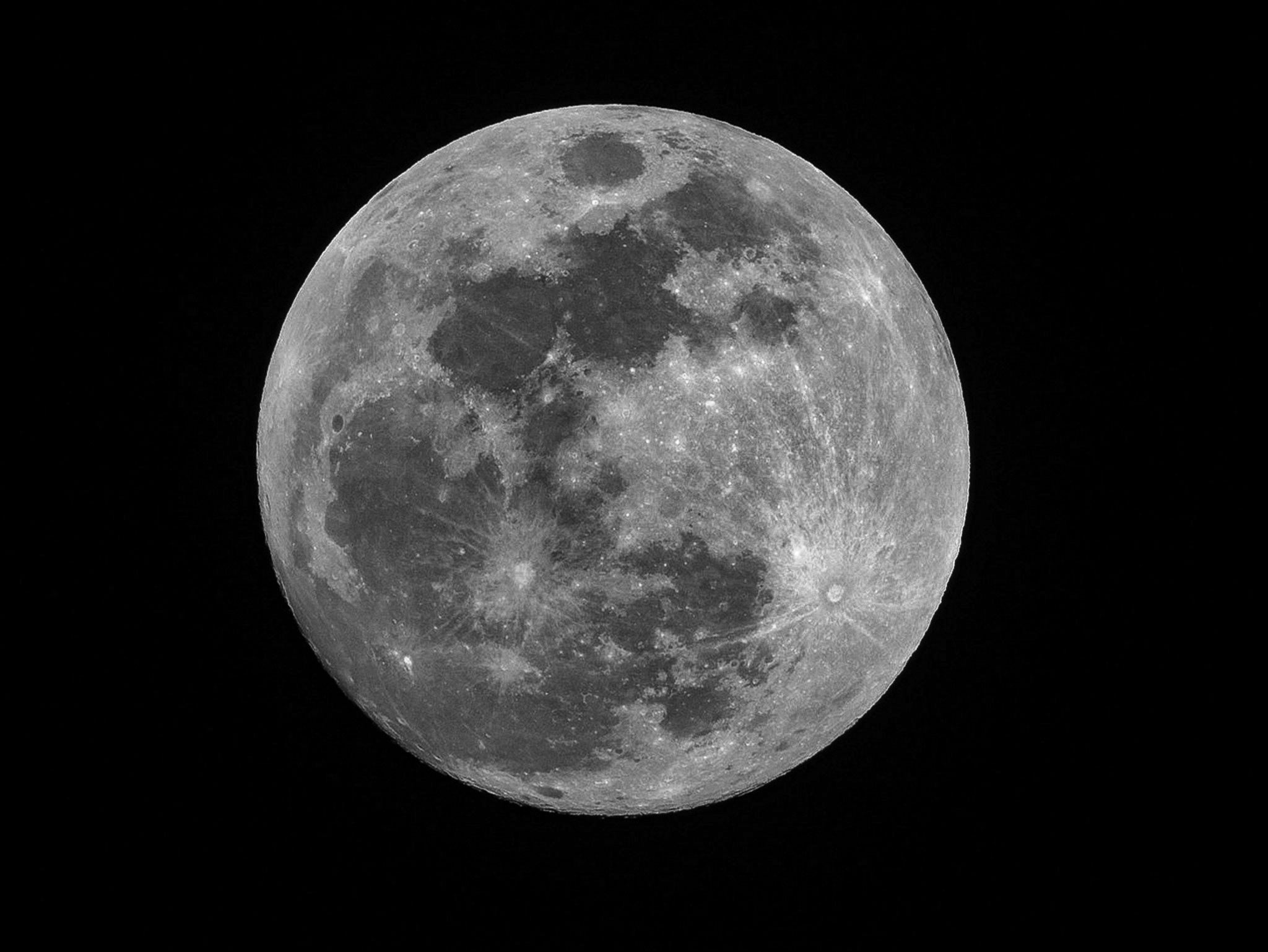
Slated to pilot upcoming Artemis II mission to orbit the moon
The primary goal of this mission will be testing the spaceworthiness of the Orion module for deep-space exploration. The flight trajectory may give the crew and the ship’s cameras an opportunity to get humanity’s first illuminated look at parts of the far side of the moon.
The Artemis campaign is NASA’s long-term initiative to return to the moon — and venture beyond it — with an ultimate goal of establishing a permanent lunar base to facilitate more long-range space exploration.
Glover flew his first space mission in 2020, when he piloted the inaugural operational crewed flight of the SpaceX Crew Dragon, known as Crew-1, on a trip to the International Space Station (ISS) for Expeditions 64 and 65. He spent 167 days aboard the station: conducting research in microgravity, performing four spacewalks outside of the station, and becoming the first Black astronaut to live for an extended period in space.
As Glover trains for the Artemis mission, he knows it will be a very different experience. Compared to a long stay on the ISS, a long-distance flight on a new craft comes with even more uncertainty — and more risk.
“We’ve had 25 continuous years of humans in low Earth orbit on the International Space Station, so over time, that training program has gotten to the point where we know what we really need to do,” he says. “But on this lunar mission, we’re testing the Orion capsule. We’re testing the suits. We’re testing the landing and recovery procedures. We’re testing the flight control team. And it’s a much more hostile environment because we’re so far from home.”
Preparing for the Unknown
During his mission on the ISS, one of the biggest lessons Glover learned was the value of being present in the moment — for very practical reasons.
“On the ISS, nothing is more important than what you’re doing right now,” he said. “It could be doing intense science or going out the door on a spacewalk — all these things require an insane amount of focus. It’s so easy to hurt yourself or break something if you’re not focused on what you’re doing.” But spending nearly six months on the ISS also gave him an opportunity to reflect on the weight of the experience.
“Maybe the biggest thing I miss from being on the space station is that I had a chance to unwind and process in real time,” he says. “I felt profoundly connected to the Earth, actually getting to miss being there.”
Glover recalls the bizarre feeling of being in space on one particular spacewalk. After crawling out from the central structure to one of the farthest solar panel arrays to make a repair, he took a quick look around at the blue of the Earth below him and the blackness of space just behind him.
“In that couple of seconds, I went from feeling like I was on the edge of the station to feeling like the space station was on top of me and I was underneath it,” he says. “It wasn’t scary, it just reminded me that there’s no up or down out there. When you take away your body’s primary reference, it can be disorienting if you’re not careful.”
Astronaut training is incredibly rigorous: crew members undergo at least two years of training for each mission, working on everything from physical fitness to scientific processes to the myriad technical details of how to operate the craft and the space station. Still, some aspects of the experience simply can’t be learned on the ground.
“As astronauts, we’re going to work really hard to learn things that are quite complex, but at the end of the day, there is also value in appreciating the unknown,” says Glover. “There’s no way to prepare for it. We have to be prepared to be unprepared.”
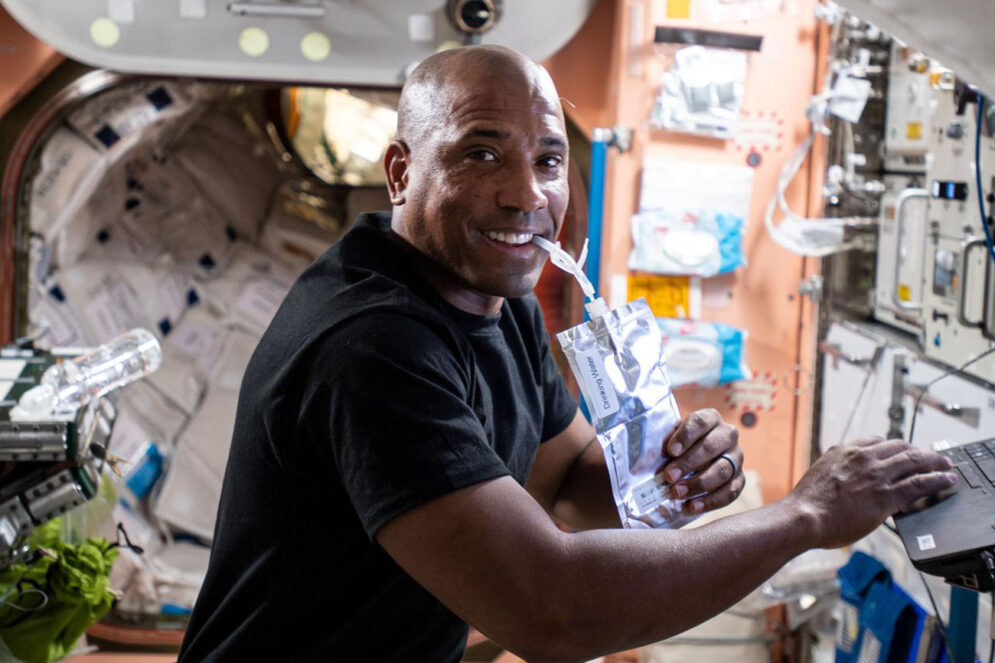
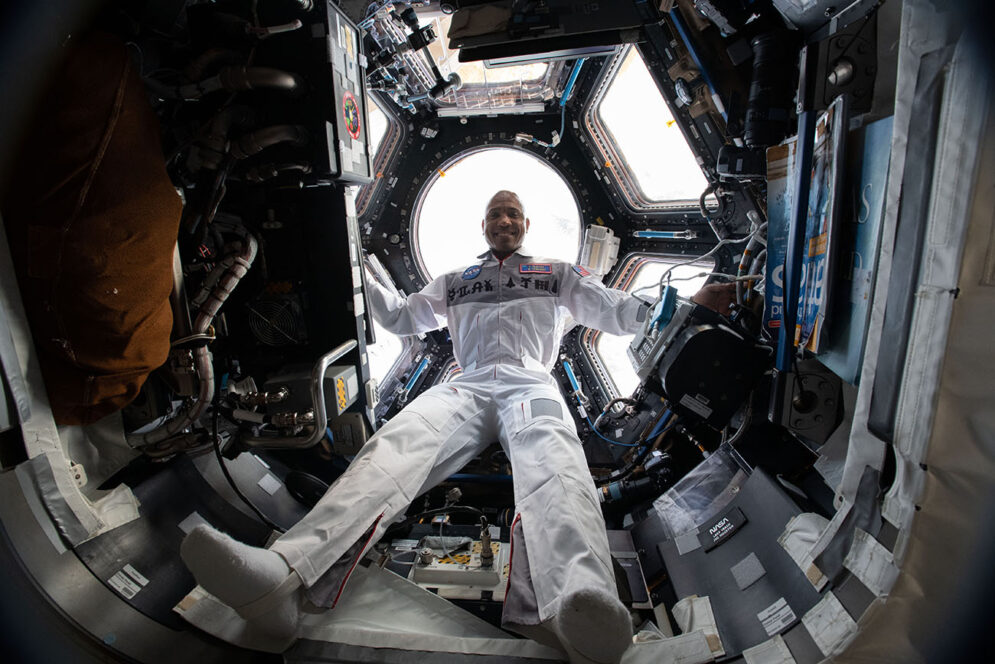
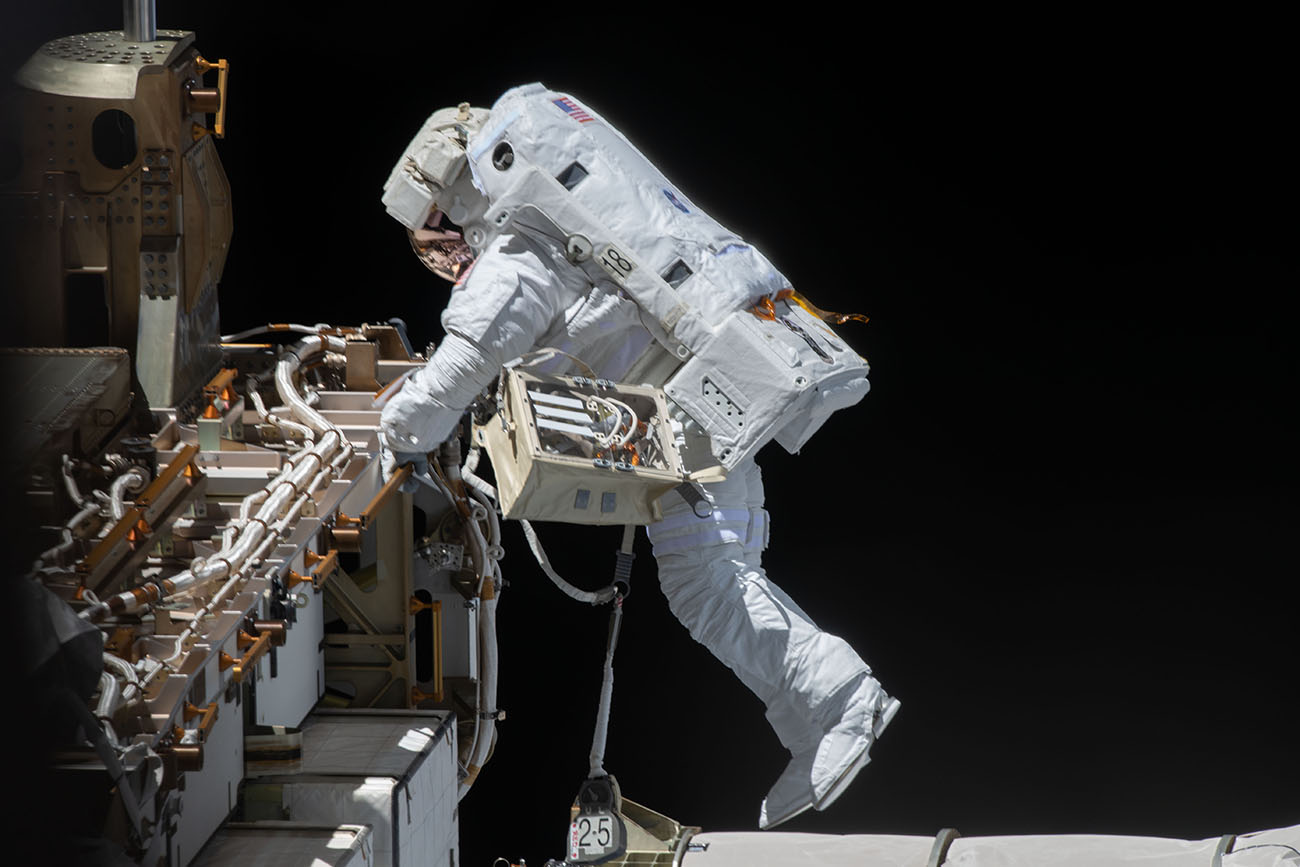
First image: Glover enjoys a snack during a day of work aboard the International Space Station. Second image: Glover floating in the ISS observation bay. Third image: Glover performs maintenance on the exterior of the ISS during a spacewalk on his 2020 mission.
Photos courtesy of NASA.
That training is critical on the Artemis mission, which will take the crew on an unprecedented route away from our planet — one that will put them out of contact with Earth for nearly an hour as they circle around the far side of the moon.
“If a space mission is like going camping, the ISS is like having a log cabin with a wood-burning stove and sheets and pans and pots. You may have to bring in your food and your coffee, but there’s infrastructure there,” he says.
“The Artemis mission is more like having a backpack with a tent and some food and some water, and the four of us are going to set out, and we only have what we’ve packed on our backs. That affects the way we train. How you prepare is really important to how the mission is going to go.”
In addition to rigorous training, the mission is designed to minimize risk. For example, the orbital trajectory the ship will take around the moon will whip it back toward Earth, so the return journey will be headed in the right direction even if the engines fail.
“I treat the risk of this mission with a lot of respect. We’re going to learn everything that we can do, but there will be some things that are beyond our control,” he says. “So we have to acknowledge the boundaries of what we can do, and then beyond that, I just have to put my faith in God and be comfortable that we’ve done the best we can.”
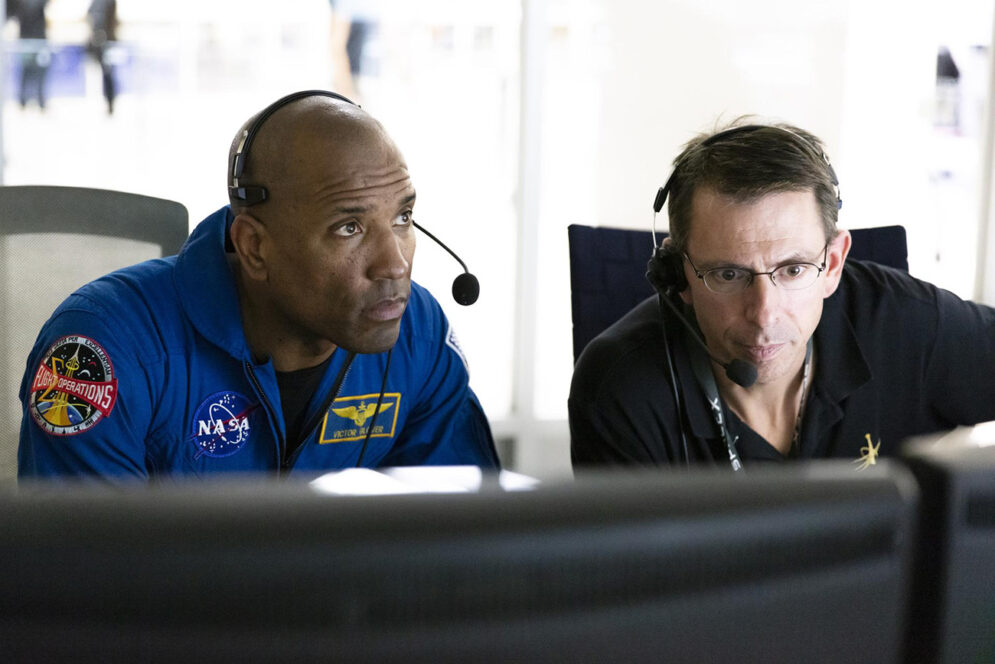
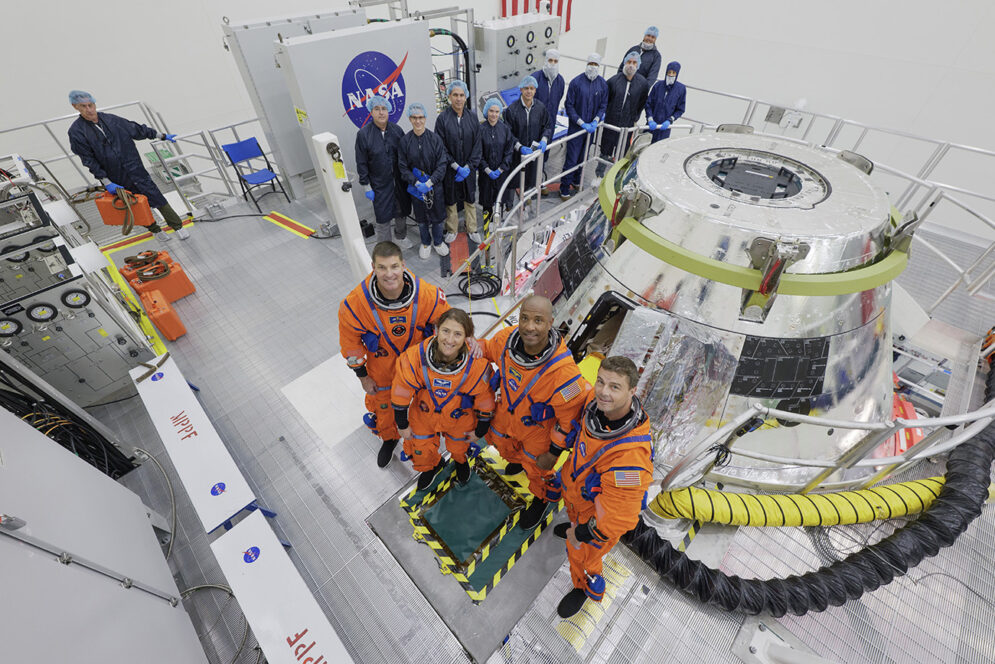
First image: Glover, left, monitors a test launch with a SpaceX mission specialist. Second image: The Artemis II crew — from left, Jeremy Hansen, Christina Koch, Glover and Reid Wiseman — along with members of the mission’s NASA support crew, prepare for a day of training on the Orion spacecraft. Photos courtesy of NASA.
A Learn by Doing Legacy
Fortunately, working through uncertainty is one of Glover’s strong suits — and it’s a skill he honed during his time at Cal Poly.
“It would be hard for me to find a part of the mission that Cal Poly hasn’t influenced,” he says. “My time there was so formative for everything I’ve done since.”
Glover was one of the first students at Cal Poly to graduate in the general engineering program — a new discipline at the time that allowed students to get a broad understanding of a variety of engineering principles and applications.
But perhaps as important as what he studied was his time outside of class. At Cal Poly, Glover was a member of the wrestling and football teams. He served in a variety of leadership roles in his fraternity. He worked as a science outreach educator, visiting local middle schools to encourage underrepresented students to consider a future in STEM. And he helped found a student group that worked to build a more diverse and inclusive campus community.
“I was absorbing a lot, but I was trying with my friends and fraternity brothers to give a lot as well,” says Glover. “That influenced who I was and who I wanted to be. I wanted to be a servant. I wanted to be someone who was useful.”
“As astronauts, weʼre going to work really hard to learn things that are quite complex, but at the end of the day, there is also value in appreciating the unknown. Thereʼs no way to prepare for it. We have to be prepared to be unprepared.”
Victor Glover
The variety of activities helped Glover develop two skills that remain critical to his work today: teamwork and adaptability.
“Everything I was doing gave me a chance to work with a high-performing team with a lot of skilled people from a lot of different places, doing very challenging things in very challenging circumstances,” he says. “Fast forward to this job — there’s no cookie-cutter setup for this job. And Cal Poly was just an indelible part of preparing me for that.”
The Learn by Doing philosophy stuck with him so deeply that he has been preaching it among his colleagues at NASA — and it’s having an impact. The agency’s chief training officer has even reshaped several of the program’s critical training courses to more intentionally fuse theoretical instruction with immediate hands-on application.
“When I’m training, instead of telling me how this spaceship is built and telling me how the coding works and showing me snapshots of it, I want to actually be in the ship,” he says. “I want to get in there and actually do the stuff, and then when you give me the academic facts about it, now that knowledge has a place to sit.”
Perhaps Glover’s strongest endorsement of the Learn by Doing experience comes from his family legacy. He and his wife Dionna (Child Development ’25) met at Cal Poly, and three of their four daughters have also become Mustangs. Their oldest, Genesis, recently graduated with a degree in biological sciences.
“We adore that they are not just at a great school — they’re at a great school together,” says Glover. “Itʼs hard to unweave Cal Poly from my life. It’s so much more than being just alumni — it truly is like part of our family.”
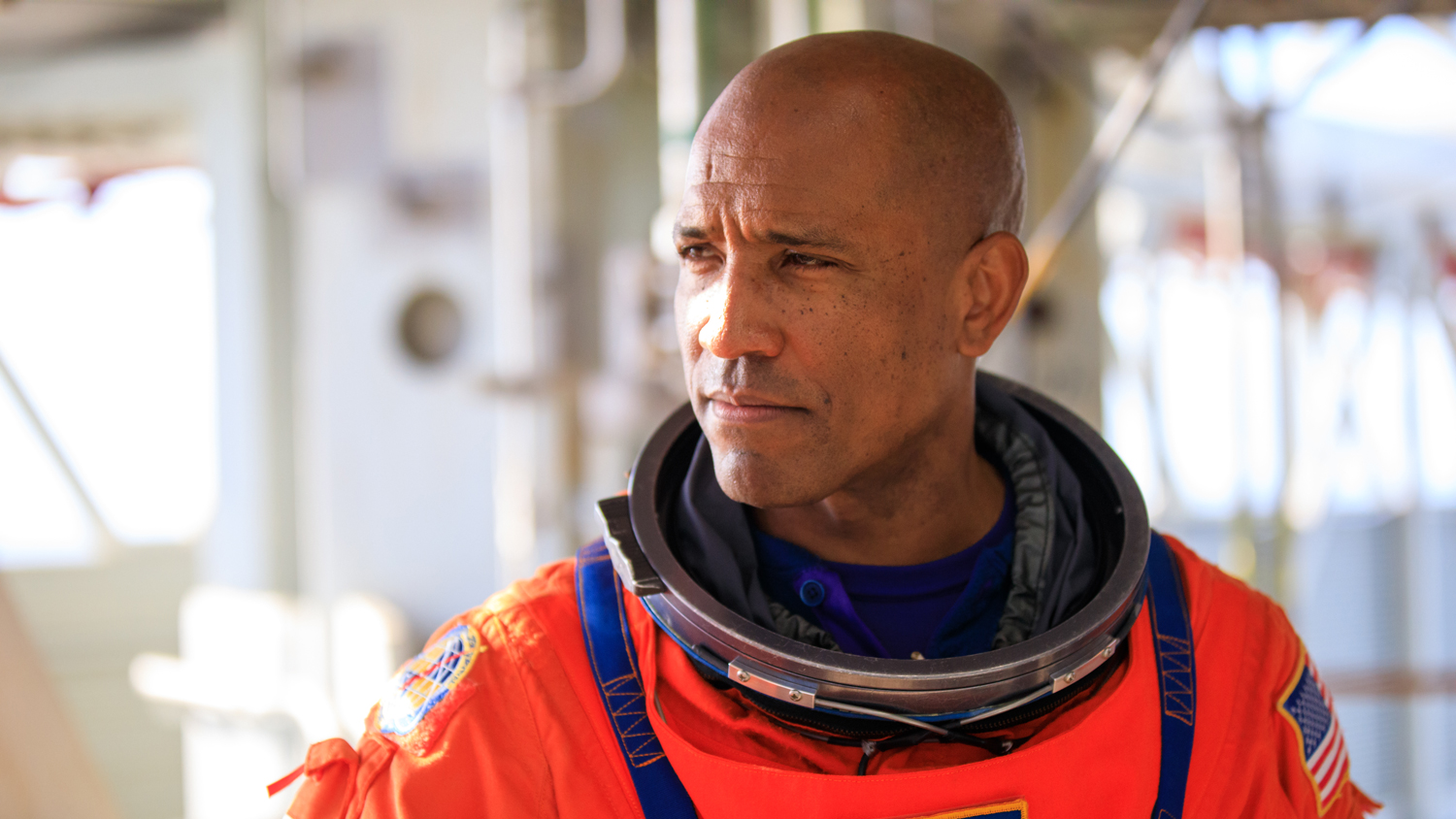
Glover on the launch pad at Kennedy Space Center for a ground systems test for the upcoming Artemis II mission. Photo courtesy of NASA.
For All Humanity
As he prepares to pilot humanity’s next step in space exploration, Glover is examining the bigger picture of why it’s so important to get this process of discovery back on track.
“Our journeys in space give us perspective and make us more protective and appreciative of our life on Earth,” he says. “When I come back from this mission, for the rest of my life, I have to share this mission with the rest of humanity. So going to space really highlights human relationships, with each other and with Earth.”
He thinks that now, more than ever, humanity needs a collective achievement like this.
“We need to be reminded that we, right now, are capable of great things, of swinging for the fence and knocking it out of the park,” he says. “With all of the divisiveness that there is in the world right now, all of the things that you can use to try to separate people, I hope that one reason that we are going to the moon is to remind us that we all share some common goals as humans.”
Your Next Read
From a childhood in the skies to orbital space flight, Cal Poly’s first alumni astronaut used Learn by Doing to carry him ever higher.
Could space farms be a possibility one day? This professor is researching one way to grow greens in zero gravity.


